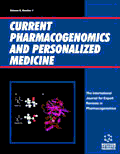
Full text loading...
We use cookies to track usage and preferences.I Understand
The polymorphism rs4444903 of the Epidermal Growth Factor gene (EGF A61G) causes differences in the EGF serum levels. It has become a biomarker for genetic susceptibility to cancer and a pharmacogenomic marker for therapies involving the EGF/EGF-receptor pathway.
The present study aimed to characterize the allele and genotype frequencies of the rs4444903 in a Cuban sample and its relationship to a specific genetic ancestry.
A cross-sectional study was carried out. Genomic data was collected from a dense genome-wide genotyping array analysis of 948 Cubans from all provinces. The allele and genotype frequencies of the rs4444903 were calculated. Analysis of ancestry-related allelic/genotypic differences was performed.
The frequencies for both alleles were found to be very similar (0.52 for G vs. 0.48 for A allele), and genotype frequencies were 24.3%, 47.9%, and 27.8% for AA, AG, and GG, respectively. Greater differences were found between Cuban provinces, with frequencies for the G allele ranging from 0.38 in Artemisa to 0.69 in Guantánamo and for the GG genotype from 14.29% in Mayabeque to 50.88% in Guantánamo. An increased African-ancestry proportion was related to a higher probability of carrying G allele and GG genotype, with a significant (p=0.0038, q=0.024) African-ancestry-enrichment pattern.
African ancestry seems to contribute to an increase in the EGF61*G allele in Cubans. Geographic patterns in admixture proportions for African and European ancestry are a determinant factor in the allelic and genotypic frequency differences between Cuban provinces. Such differences should be observed when designing association studies and implementing therapeutic approaches based on the EGF/EGF receptor pathway in Cuba.

Article metrics loading...

Full text loading...
References


Data & Media loading...

